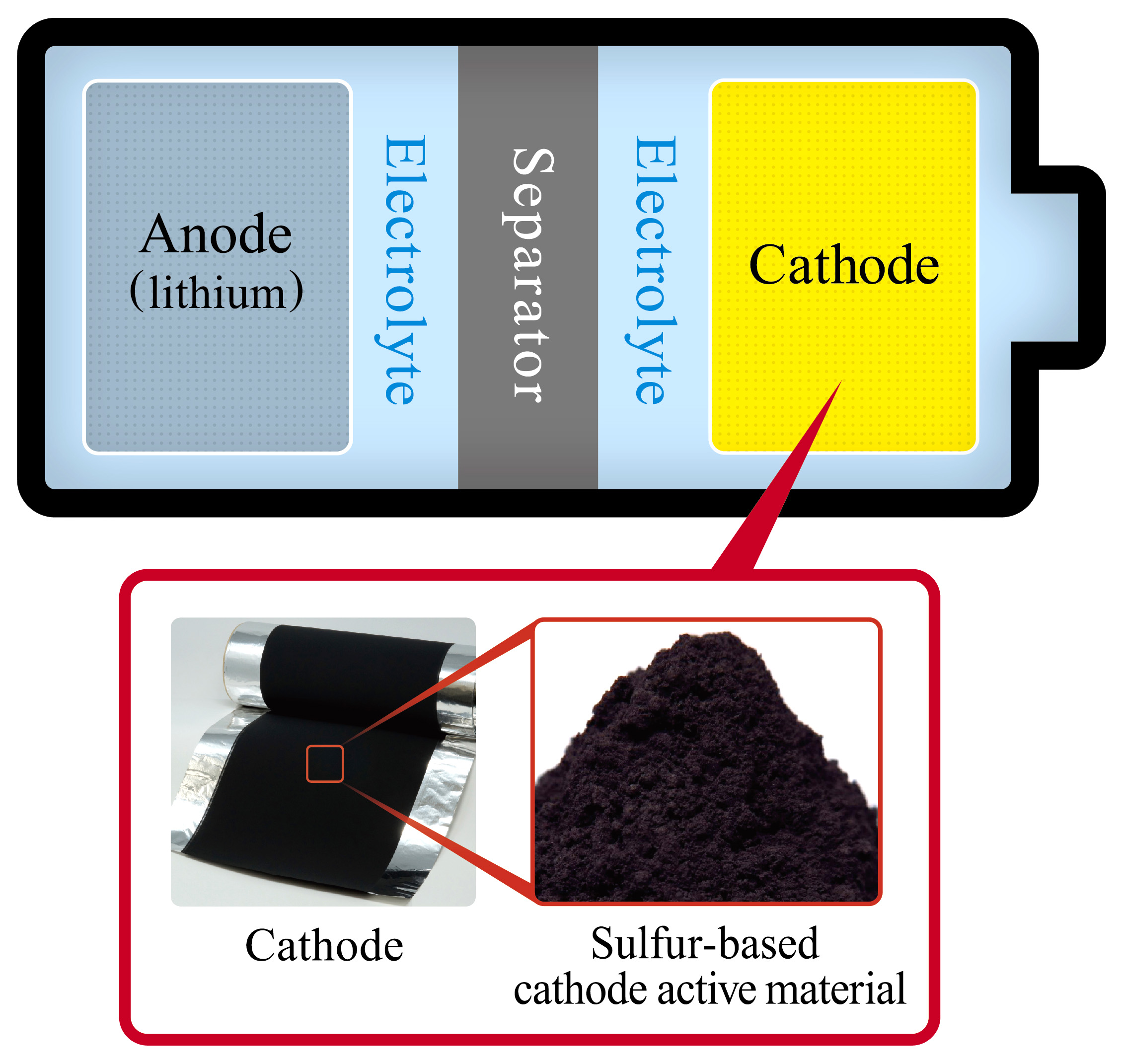Sumitomo Rubber Establishes “Sulfur Utilization on Lithium-ion Battery Knowledge Exchange Network” for Practical Application of Next-Generation Battery
Apr. 01. 2024
Sumitomo Rubber Industries, Ltd. is pleased to announce that it, together with the National Institute of Advanced Industrial Science and Technology as the principal lead organization and ADEKA Corporation, has established on April 1 the Sulfur Utilization on Lithium-ion Battery Knowledge Exchange Network as a place for co-creation by companies aiming to create the business of sulfur-based battery, which is expected to serve as a next-generation battery. At the time of establishment, the Osaka Research Institute of Industrial Science and Technology participated as the lead organization.
We pursue the technological development of a sulfur-based positive-electrode active material, an important component of lithium-sulfur battery, by making use of our knowledge on sulfur, which is dispensable in tire production. We will further accelerate the development through the Network.
 |
 |
|
Structure of lithium-sulfur battery
|
In an effort to realize a future society in which renewable energy is used as a primary power source, the development of next-generation batteries is aggressively pursued with the growing need for energy storage facilities, which are used for the adjustment of power supply and demand. Among them, lithium-sulfur battery is considered one of the promising ones.
Lithium-sulfur battery, which has a higher energy density than lithium-ion battery, can achieve higher battery performance and lighter weight, and has a low possibility of ignition because of its structure. Moreover, it does not use a rare metal, such as cobalt, as a battery material, but uses sulfur, a resource found in abundance in Japan, indicating its advantage in terms of sustainability as well. Therefore, it is expected to be put to practical use as a safe, low-cost, and high-performance storage battery.
We own excellent compounding, processing, and visualization techniques for sulfur, which have been accumulated through a high-quality tire manufacturing technique (curing*1). Using the process, we have carried out research for the practical application of lithium-sulfur battery.
To commemorate the establishment of the Network*2, the first meeting will be held on April 11.
Going forward, we will further accelerate our initiatives for the technological development and practical application of a positive-electrode active material, an important component of lithium-sulfur battery, in order to contribute to improving product performance and sustainability and reducing environmental loads in a broad range of areas such as energy and mobility, which specifically include storage batteries, EVs, drones, unmanned aircrafts, flying cars, and artificial satellites.
※1 The process of adding sulfur to rubber as a cross-linker then heating. The strength and durability of a tire can be improved as the chemical reaction changes the molecular structure of rubber.

